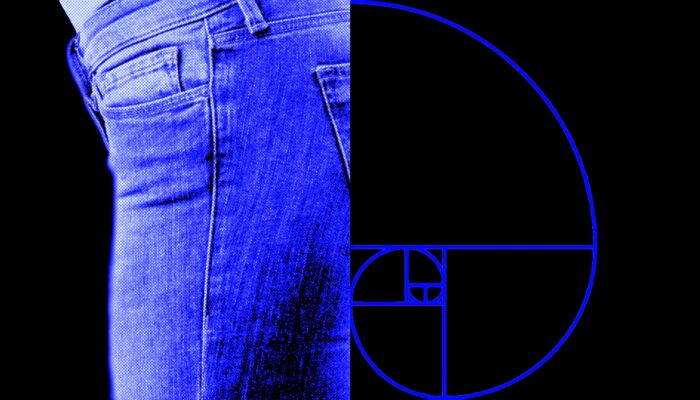In the opening scenes of the Amazon Prime series House of David season 2, shortly after the titular David slays Goliath with a stone to the forehead, battle rages around the biblical figure.
A dusty visual overlay partially obscures crowds of men in the desert, sword-fighting in armor and on horseback. With some wardrobe tweaks, this scene could look like something out of Game of Thrones or Dune. But House of David showrunner Jon Erwin says he didn’t have the budget to bring these scenes to life. Instead, he used AI.
“The entire shot is done using these tools, virtually,” Erwin tells WIRED. “And the cost of augmenting those shots is minuscule compared to the time and cost it would have been to generate those with, you know, traditional VFX methods.”
Erwin’s faith-based production company the Wonder Project sent WIRED nearly two dozen still images from “mostly AI-generated scenes” from House of David season 2, which the company says used more than four times as many AI shots compared to the show’s first season—from more than 70 in season 1 to between 350 and 400 shots for season 2. The show’s second season follows the eventual King David of Israel in the year 1000 BCE.
Many of the images were of crowds during battle sequences, but AI was also used for shots of stone fortresses, fires ravaging hillsides, and heroes standing at the tops of mountains, staring out over foggy landscapes. They don’t bear the wonky hallmarks of generative AI output from years past, but it’s not hard to believe they were AI-generated.
“Let’s say we only have the money to have a certain scale to the frame,” Erwin says. “You can put a very real camera on a very real actor and direct that actor, direct the camera, and that becomes, in essence, the hand inside a puppet. The puppet itself is this digital world that you create.”
The way Erwin talks about “magical” AI filmmaking is very different from how most people in Hollywood and its audience have. Oscar-winning Frankenstein director Guillermo del Toro recently told WIRED he hopes he dies before AI art goes mainstream, comparing the “arrogance” of tech bros to Victor Frankenstein himself. Wicked star Ariana Grande liked an Instagram post that indicated she’d prefer to never see an AI-generated image ever again. And Coca-Cola just steeled itself for another round of consumer backlash to its second annual AI-generated holiday ad, which it received in the form of viral reactions like, “Biggest company in the world proudly admitting to accelerating the apocalypse and asking ‘what are you going to do about it?’”
But Coca-Cola execs and AI enthusiasts like Erwin say that the loudest people complaining are more like a shrinking minority (the founder of the AI company that made the Coke ad actually told the Hollywood Reporter the “haters” were mainly creatives “afraid for their jobs” versus “average people”), while AI companies like Runway have signed deals with studios like Lionsgate to train custom AI tools on its archives. Erwin said he’s used Runway’s “image to video” tools, as well as Luma’s “modification” features and products from Google and Adobe.
“What we found is there were kind of three types of tools. There were image generators, there were up-res tools, and there were video generators. We found that we could combine those tools in a stack,” Erwin said. “By the end, we were using 10 to 15 core tools.”
Initially, Amazon ordered one season of House of David, which it renewed after the Christian epic quickly topped charts on the streaming service, resonating with the “faith audience” in particular. Erwin’s vision for the Old Testament adaptation came from visiting Israel as a teenager, he says, and the main cast features several Israeli actors. The series has been praised by evangelical outlets like The Christian Post and The Gospel Coalition, as well as by Batya Ungar-Sargon in The Free Press, who wrote “Evangelicals and other American Christians love Israel because they know and love the Bible.”
In contrast to the religious and ideological supporters of the show, critics like Alison Herman at Variety were harsher and didn’t mince words. She called House of David “wooden and cheap-looking,” with “hokey special effects.” Viewers of the show most likely don’t know that some of them were made with AI. But House of David doesn’t need to resonate with everyone. The Wonder Project says it has sold over half a million subscriptions in three weeks by offering season 2 through its subscription channel on Amazon Prime, which is currently running a seven-day free trial offer before renewing at $8.99 a month. The company’s other popular offerings include the miniseries The Bible and Erwin’s 2023 Christian drama Jesus Revolution. Religion has been a breakout genre for AI adoption in a much bigger sense—from rabbis and pastors using it to write sermons to a slew of AI Jesus chatbots. The AI industry itself embraces religiosity as a selling point for its leaders and followers.
If the economic and spiritual incentive of cheaper, faster content seems to be winning out over consumer fears about generative AI, copyright lawsuits, labor and environmental impacts, and matters of artistic taste, it’s happening more slowly than some people in Hollywood feared, says Duncan Crabtree-Ireland, the national executive director of SAG-AFTRA, which is the largest labor union for performers. Speaking generally about what major studios and companies are doing (SAG-AFTRA receives confidential updates about their AI implementation twice a year), Crabtree-Ireland says they’ve taken a “cautious approach.”
“I think because they recognize that there are real risks associated with using AI in ways that turn off consumers, that antagonize artists, that might trigger reactions that are not desirable for them,” he said. “I would say that the current use of digital replication exists, but it is not widespread.”
In 2023, SAG-AFTRA negotiated the use of AI likenesses in the entertainment industry, requiring informed consent and fair compensation to try and avoid performers losing their income to AI. So far, Crabtree-Ireland says the union hasn’t seen a lot of cases around companies violating these rules, but that they’re mainly using AI to do things like expedite editing. Still, SAG-AFTRA has issued condemnations of entirely AI-generated actors like Tilly Norwood, who stoked industry discourse but has yet to land any notable gigs.
Erwin says he wants other filmmakers to think of AI like a new form of live action in itself, with AI creating its own “principal photography,” but he faces significant pushback from some of his peers. One of them is Justine Bateman, whose quotes about AI have resonated on social media and whose new CREDO23 film festival showcases entries that proudly use no generative AI whatsoever.
“It’s presenting itself as a solution if we had a business where we didn’t have enough writers or we didn’t have enough directors or actors or location managers. But we have the opposite situation,” Bateman tells WIRED. “We have more workers than we have jobs. So it’s not solving any problem except the problem a CEO might have of not having profit margins wide enough for their liking.”
Film and TV production has hit historic new lows in LA, where new AI studios like Luma have opened offices to build relationships with people like Erwin, who says he’s “able to really shape the tools to the needs of the industry.” Erwin thinks that using AI to lower the budgets of projects will allow more projects to be made, creating some new jobs rather than just taking others away. For most people working in the film industry, that’s yet to become the case.
But even if Erwin can’t convince all of his industry peers, his audience hasn’t been turned off by the AI. The shots that use AI flash by quickly, while most casual viewers at home are occupied with a second screen. The use of AI has already started to fade into the background.
“I think part of what people seem to react to is pushing ‘We did this with AI’ as a marketing piece to get people excited or frustrated at something,” says Derek Slater, a tech policy strategist and founder of Proteus Strategies. “This will be blended into the production process as another sort of editing and VFX tool and not treated as this bespoke, separate process.”
But while most of the millions of people watching House of David probably don’t know that AI played a role, Erwin is adamant that he and other filmmakers who may be using the technology more quietly should be loud and proud—if not to influence consumers, then to signal a new frontier to the rest of the industry.
“What makes it scary for some people and really exciting for others is I’ve never seen technology iterate and evolve this quickly,” he said. “This is a fundamental change that’s going to happen no matter what your opinion is, and these tools are going to be the basis of a lot of work moving forward.”




